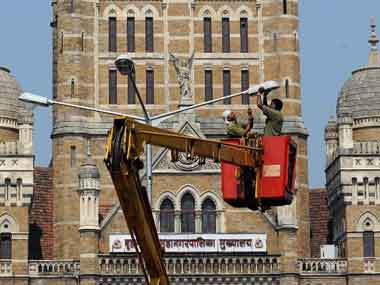Mumbai: The Maharashtra government did the right thing by tossing the Mumbai Development Plan 2034 (DP 2034) back at the Municipal Corporation of Greater Mumbai and asking it to correct the mistakes, which are innumerable, and republish it for public response. This is a crucial step for a city, which is on its brink because of past mismanagement, and another set of errors would easily push it off the cliff. [caption id=“attachment_2205976” align=“alignleft” width=“380”]  The Municipal Corporation of Greater Mumbai. AFP[/caption] While the state government showed its sensitivity to public opinion, which emerged more as an outrage at the stupidities brought into the new plan, the near scrapping of the DP implies several things. One, the city government apparently does not know its own city; two, that it thought nearly half the population – slum dwellers – did not matter; and three, more importantly, it failed to apply its mind before asking for public response. However, given the serious flaws, already much publicised, the state government could have asked the MCGM to prepare a plan de novo. Chief Minister Devendra Fadnavis has only asked for corrections, which even if carried out, may not provide a wholesome larger plan. A ‘corrected’ plan would only have too many band-aids on it than be a thoroughly thought out plan of action. Corrections mean altering wrongly identified lands – a Gaothan, for instance identified as a slum, and a park as a commercial area. The DP, which was to have come into effect by 2014, and already delayed, may well opt for better citizen consultations prior to its preparation than seek responses after it is prepared. The city’s plans for the future cannot be without hitching itself to the larger metropolitan areas to its north. Mumbai’s future hinges on that. The purpose of the DP 2034 was to decide the land use across the city, and it cannot be that the DP overlays a map over the existing spaces which have been put to different uses. If they hurt the heritage structures, if they run roads through residential colonies in a city where finding housing is an impossible task, where mangroves are also threatened, they point to a careless as close as it could get to being reckless. Why do I say the city civic body does not know the city it rules? Even if consultants are involved, the officials could not have published the DP without a simple run-through. Except for the municipal commissioners, who belong to the IAS, and stewards the city’s management, the rest are tenure officials who have been around for long; they should have smelt the rat moment they saw the plan. It is either being amateurish, or a deliberate madness, because most of the DP involves use of land – a profit centre. It is strange that non-governmental organisations like the Urban Design Research Institute and even the Heritage Committee had to step and expose the flaws which highlighted how little the city government cares for the city it is mandated to manage. Had it not been for such alert flaw-spotting, and the DP 2034 was adopted, the city would have run into a crisis sooner than later. A watchful citizenry have to thank themselves for saving it. Slums, though part of the city, have never been a real concern for the civic body though it fitfully provides some amenities, has been historically kept out of the planning processes, but the land on which they squat have been eyed by all authorities involved, including the state government, for the profit of the real estate industry. That also explains why high-density populations have been thought of in the worst places – congest areas near railway stations that the commuters cannot reach because of unattended bottlenecks. Evidence that the civic body itself thinks poorly of the DPs – there have been two so far – is to be found in the fact that such plans are delayed in preparation, approval, and execution. The first was in 1967, cleared in 1967, for a short span of a decade, aimed at containing the ill-effects of a runaway population size. The second DP was prepared in 1981 but adopted only in 1994, a clear 13 years lost. Importantly, by the time the time for a new DP arrived, it was found that the previous one was never fully implemented. And with the new DP as proposed but now defeated by public opinion, the civic body’s attempt has been to promote higher densities in the city in a 180-degree turn from the previous two DP’s thrust – decongestion. It seeks to manage its stumble towards its realisation by using floor space index (FSI) and TDR (Transfer of Development Rights) both eagerly sought benefits by the builders lobby. The implications could only be disastrous.
The purpose of the DP 2034 was to decide the land use across the city, and it cannot be that the DP overlays a map over the existing spaces which have been put to different uses.
Advertisement
End of Article
Written by Mahesh Vijapurkar
Mahesh Vijapurkar likes to take a worm’s eye-view of issues – that is, from the common man’s perspective. He was a journalist with The Indian Express and then The Hindu and now potters around with human development and urban issues. see more


)
)
)
)
)
)
)
)
)



